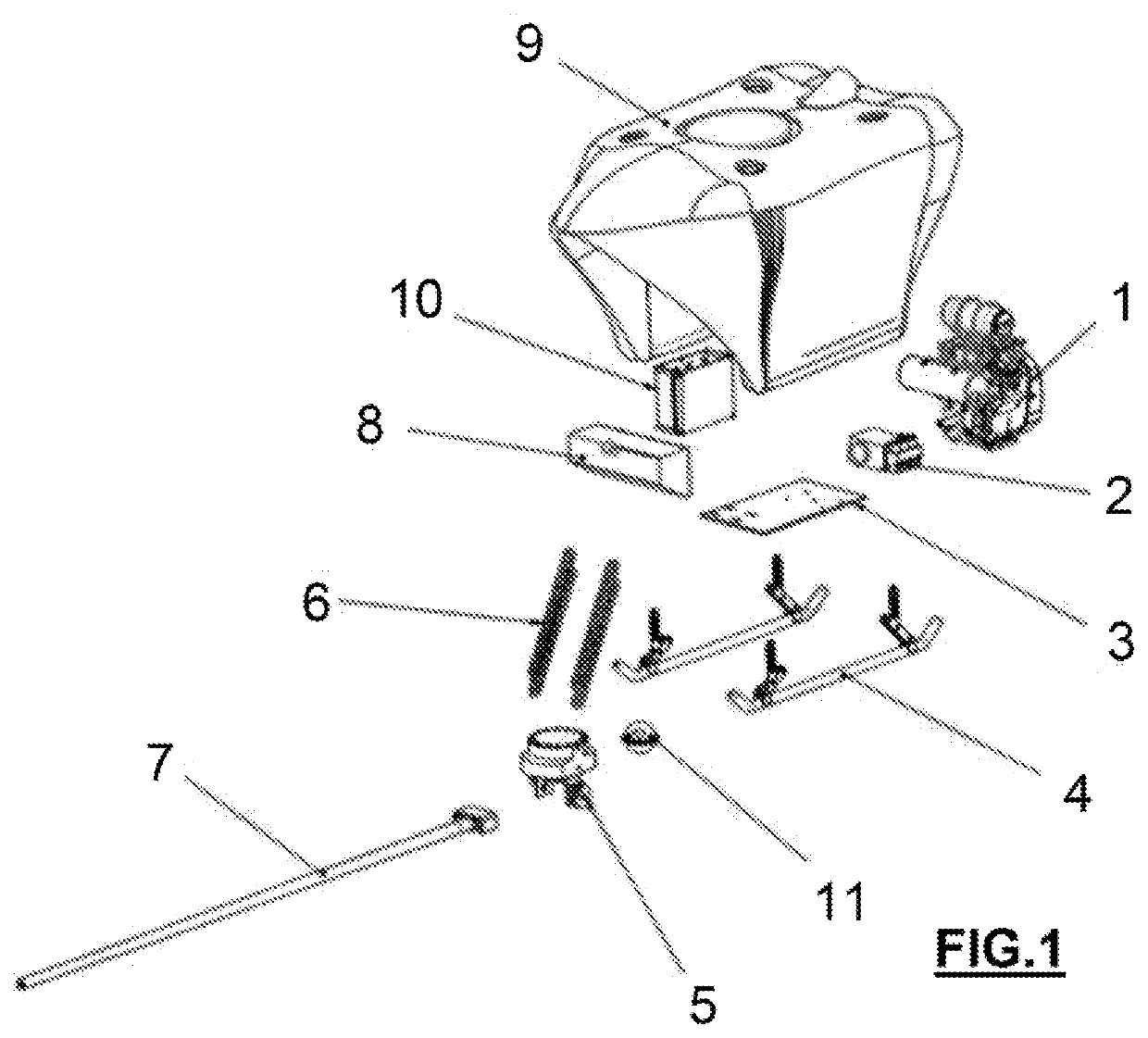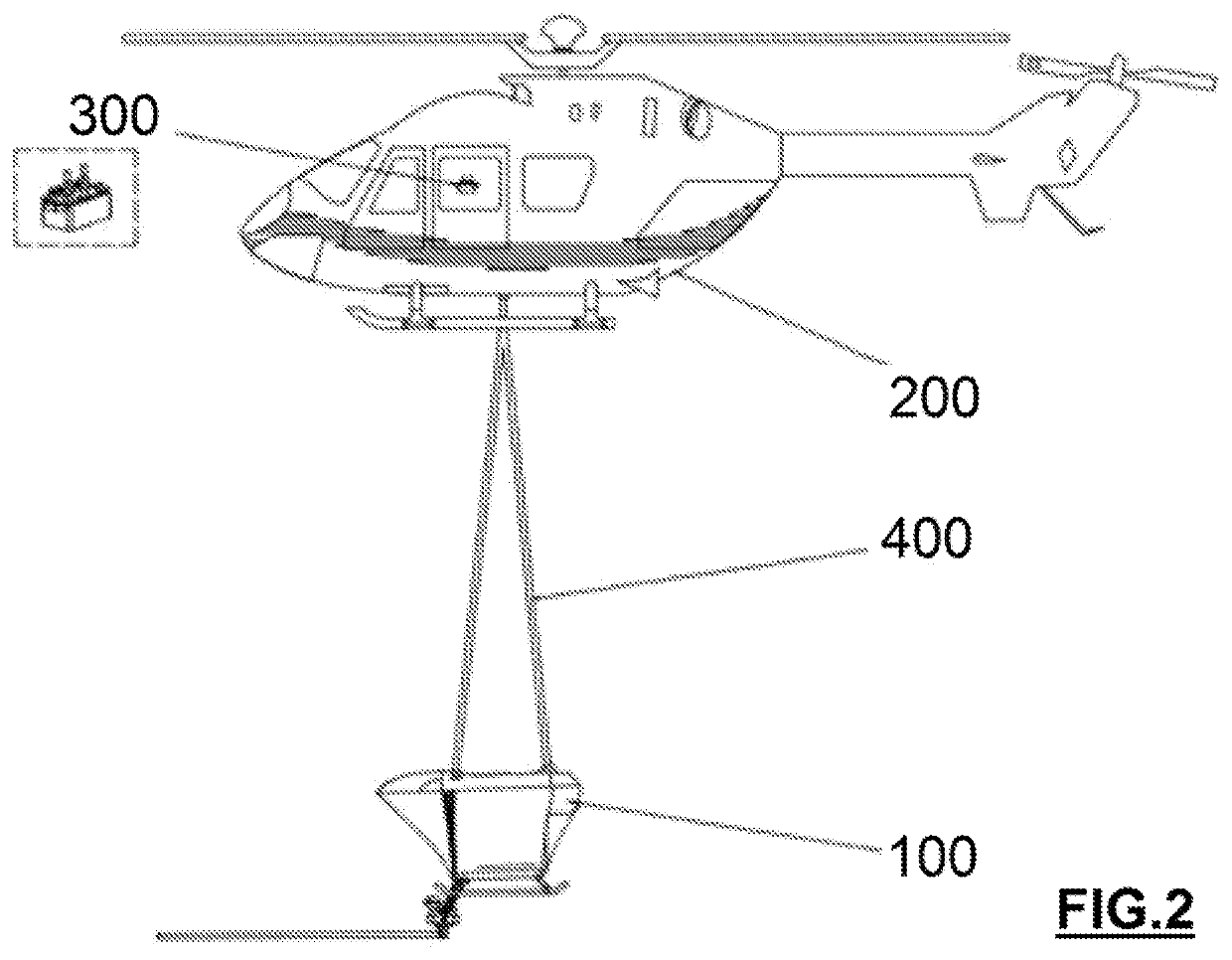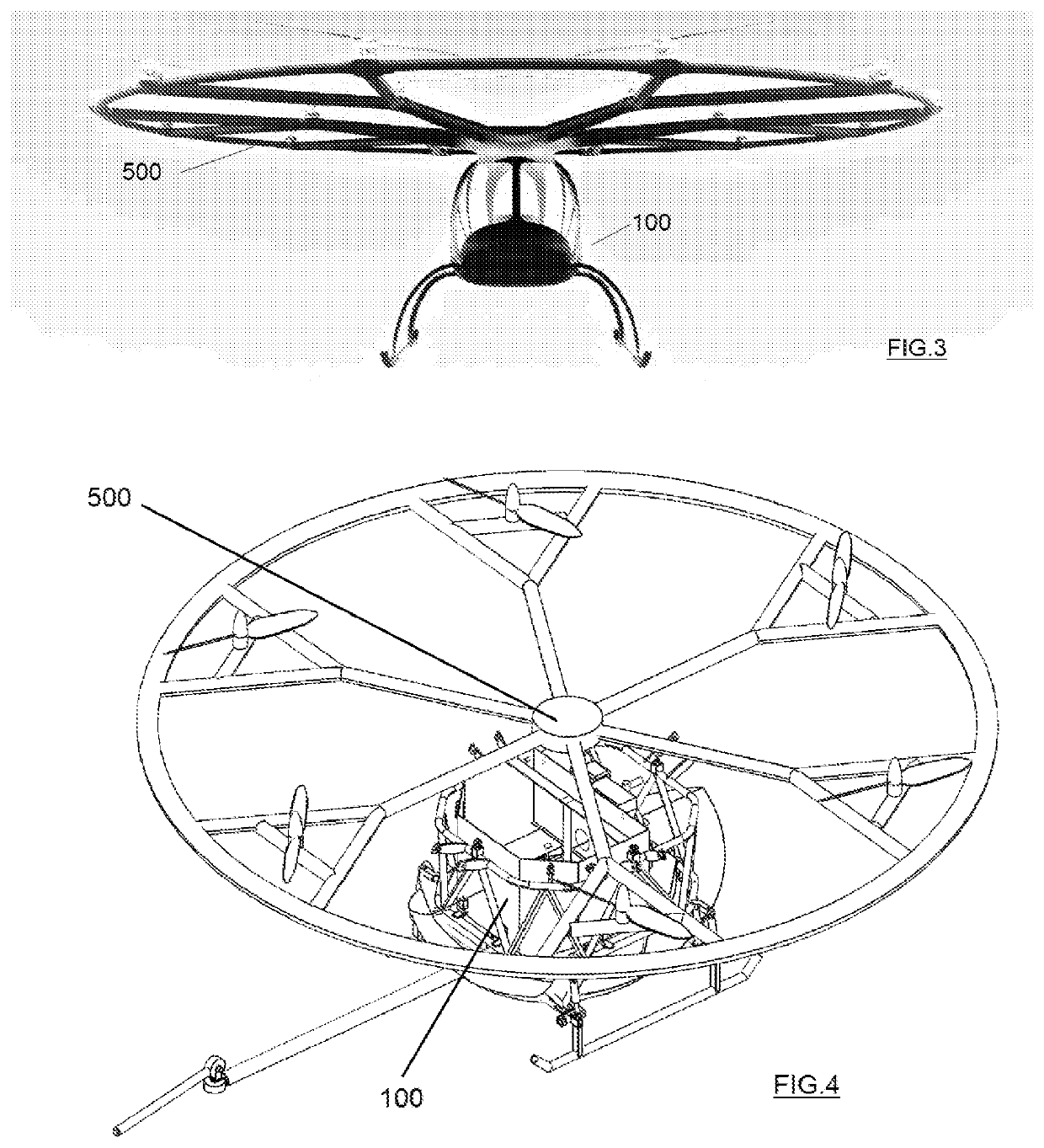Air-Transportable Device For Projecting Pressurised Liquid
a technology of air transport and pressurised liquid, which is applied in the direction of cleaning using liquids, instruments, television systems, etc., can solve the problems of affecting the operation of the wind turbin
- Summary
- Abstract
- Description
- Claims
- Application Information
AI Technical Summary
Benefits of technology
Problems solved by technology
Method used
Image
Examples
Embodiment Construction
[0014]The present invention relates to an air-transportable device for projecting pressurized liquid, according to the first claim that accompanies the present description. Specific embodiments of the invention are described in dependent claims.
[0015]This device makes it possible to separate the device from the aircraft used since, as it is transported externally, in the same way as a cargo basket, it does not need any type of approval, but simply to comply with the basket-specific specifications for each helicopter (i.e. essentially weight, centering, center of gravity, and dimensions) established by the aircraft manufacturer and / or operator. Thus, it is not treated like on-board system, but rather as an external load.
[0016]Another advantage over the prior art is that the device is operated remotely. In other words, unlike in the cited documents, the operator is inside the cabin of the aircraft or, if the aircraft is unmanned, at the actual ground control console.
[0017]The aim of t...
PUM
| Property | Measurement | Unit |
|---|---|---|
| length | aaaaa | aaaaa |
| pressure | aaaaa | aaaaa |
| distance | aaaaa | aaaaa |
Abstract
Description
Claims
Application Information
 Login to View More
Login to View More - R&D
- Intellectual Property
- Life Sciences
- Materials
- Tech Scout
- Unparalleled Data Quality
- Higher Quality Content
- 60% Fewer Hallucinations
Browse by: Latest US Patents, China's latest patents, Technical Efficacy Thesaurus, Application Domain, Technology Topic, Popular Technical Reports.
© 2025 PatSnap. All rights reserved.Legal|Privacy policy|Modern Slavery Act Transparency Statement|Sitemap|About US| Contact US: help@patsnap.com



